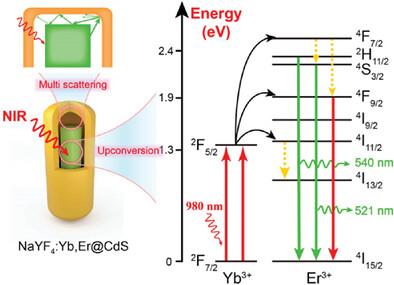Internal Nanocavity Regulation of Embedded Rare Earth Up‐Conversion Nanoparticles for H2O2 Production Operable at Up to 780 nm
IF 13
2区 材料科学
Q1 CHEMISTRY, MULTIDISCIPLINARY
引用次数: 0
Abstract
Semiconductor photocatalysts embedded with rare earth upconversion nanoparticles (REUPs) are a promising strategy to improve their photoresponse range, but their photocatalytic performance within the near‐infrared (NIR) region is far from satisfactory. Here, a method is reported to improve the photocatalytic activity by adjusting the nanocavity of upconversion nanoparticles inside a semiconductor. Two types of CdS embedded with NaYF

求助全文
约1分钟内获得全文
求助全文
来源期刊

Small
工程技术-材料科学:综合
CiteScore
17.70
自引率
3.80%
发文量
1830
审稿时长
2.1 months
期刊介绍:
Small serves as an exceptional platform for both experimental and theoretical studies in fundamental and applied interdisciplinary research at the nano- and microscale. The journal offers a compelling mix of peer-reviewed Research Articles, Reviews, Perspectives, and Comments.
With a remarkable 2022 Journal Impact Factor of 13.3 (Journal Citation Reports from Clarivate Analytics, 2023), Small remains among the top multidisciplinary journals, covering a wide range of topics at the interface of materials science, chemistry, physics, engineering, medicine, and biology.
Small's readership includes biochemists, biologists, biomedical scientists, chemists, engineers, information technologists, materials scientists, physicists, and theoreticians alike.
 求助内容:
求助内容: 应助结果提醒方式:
应助结果提醒方式:


